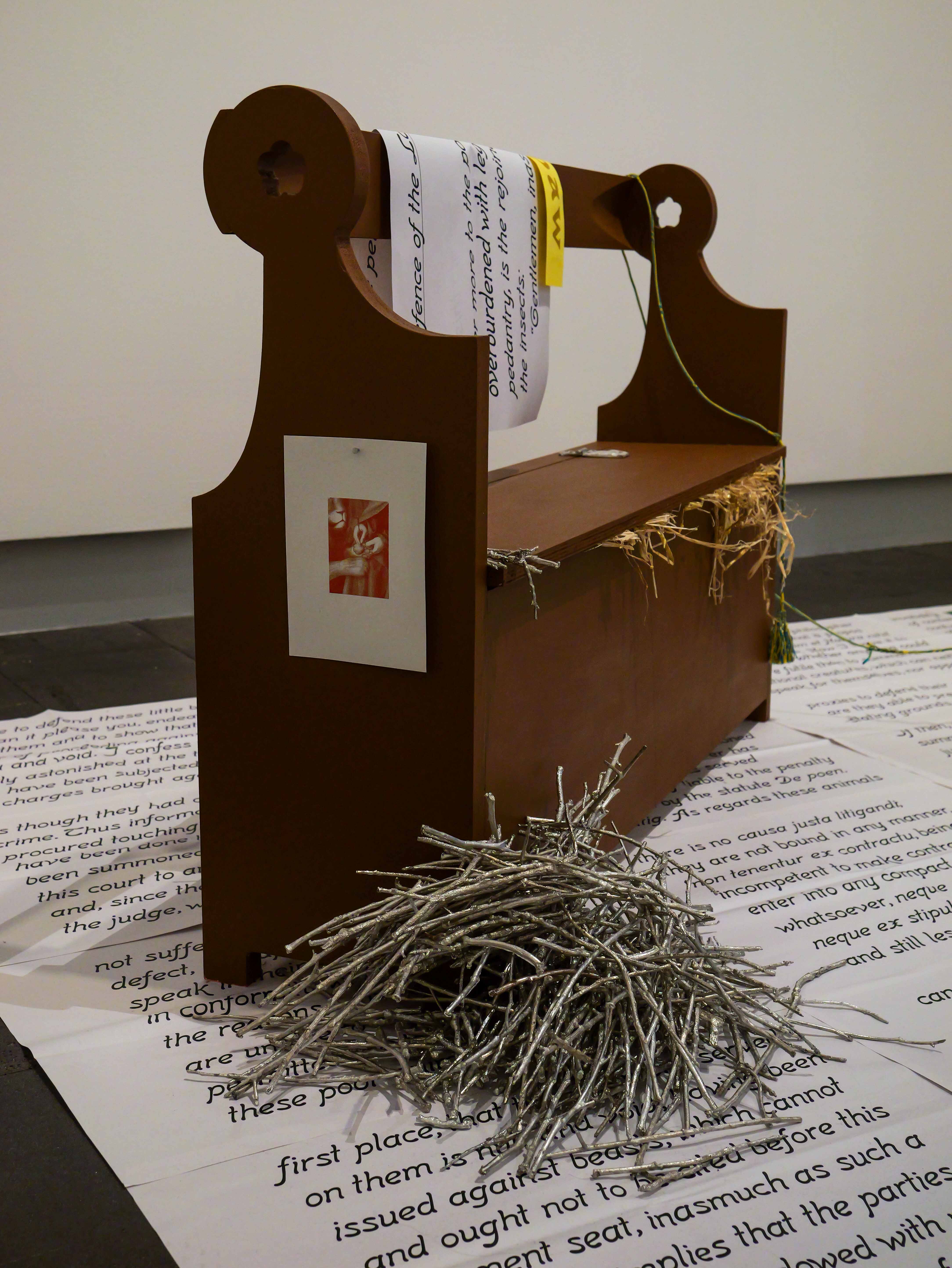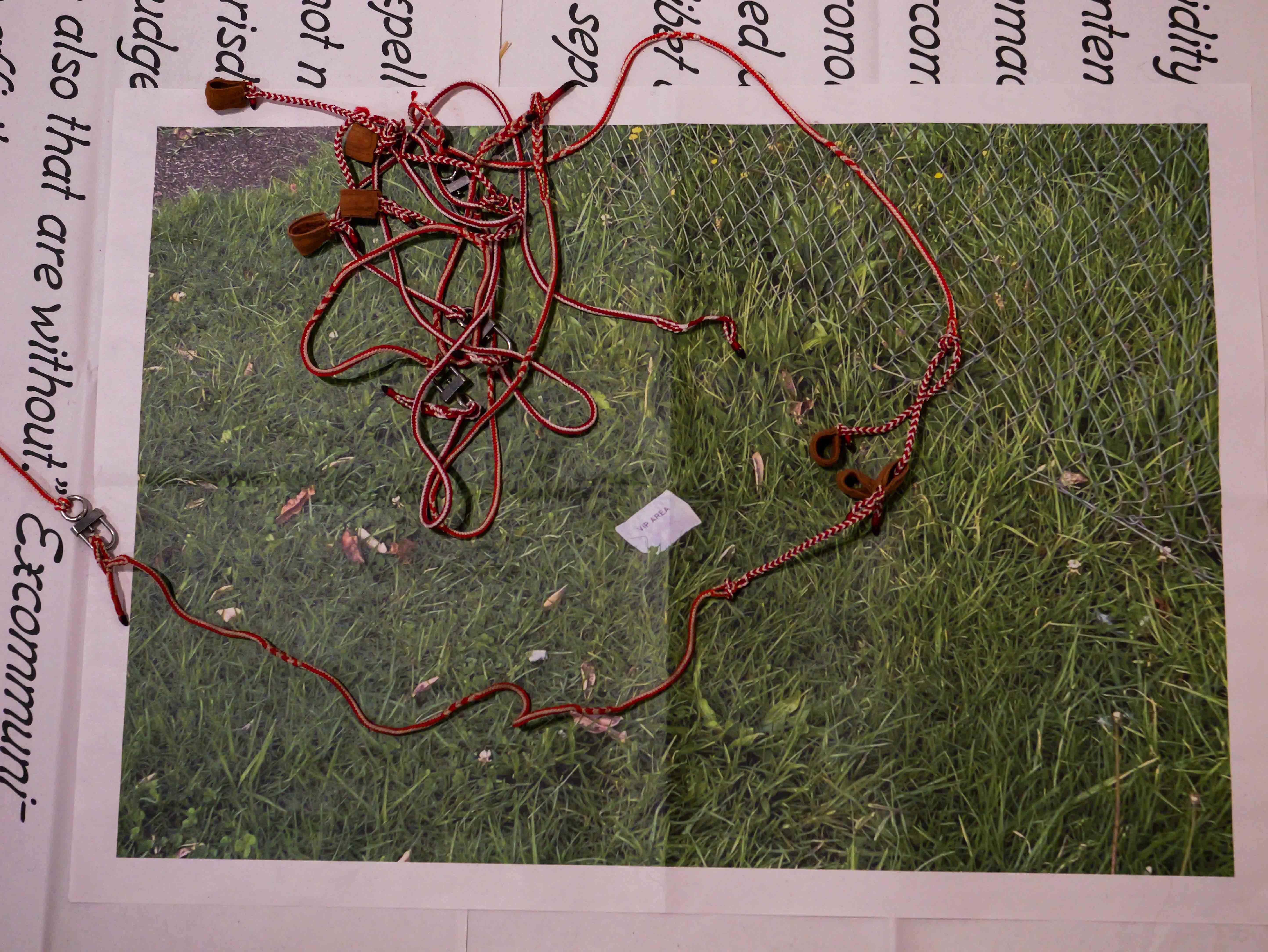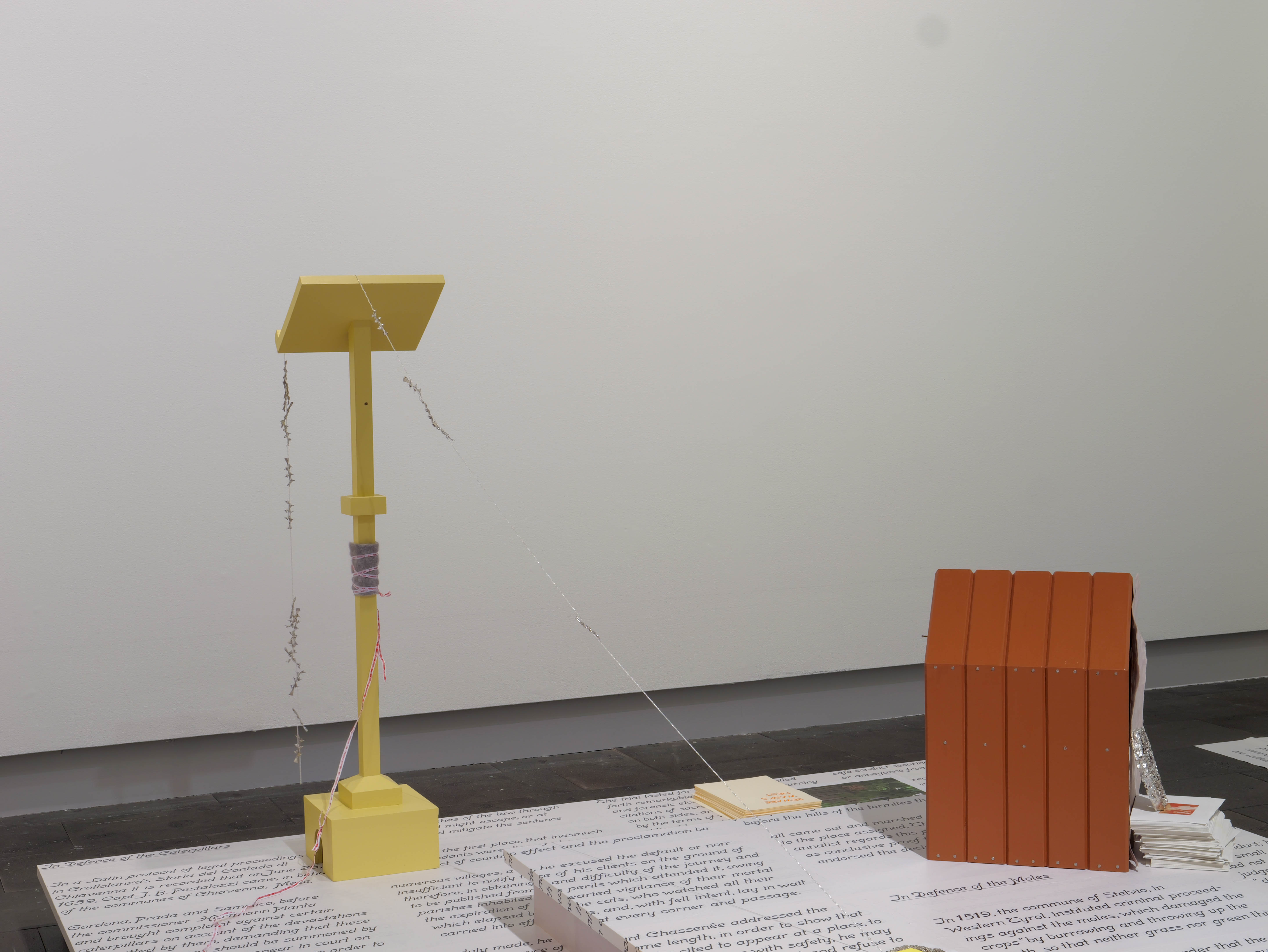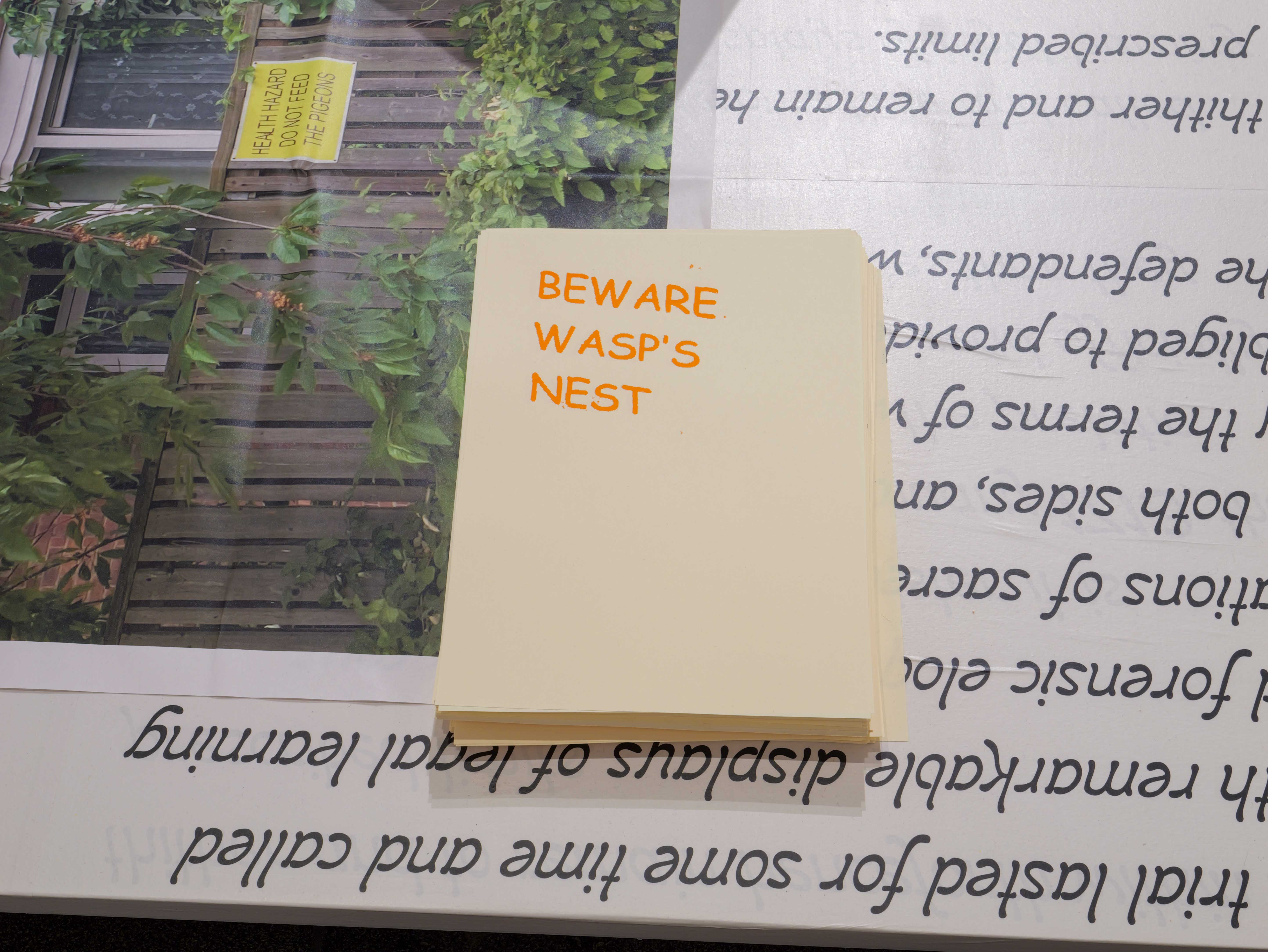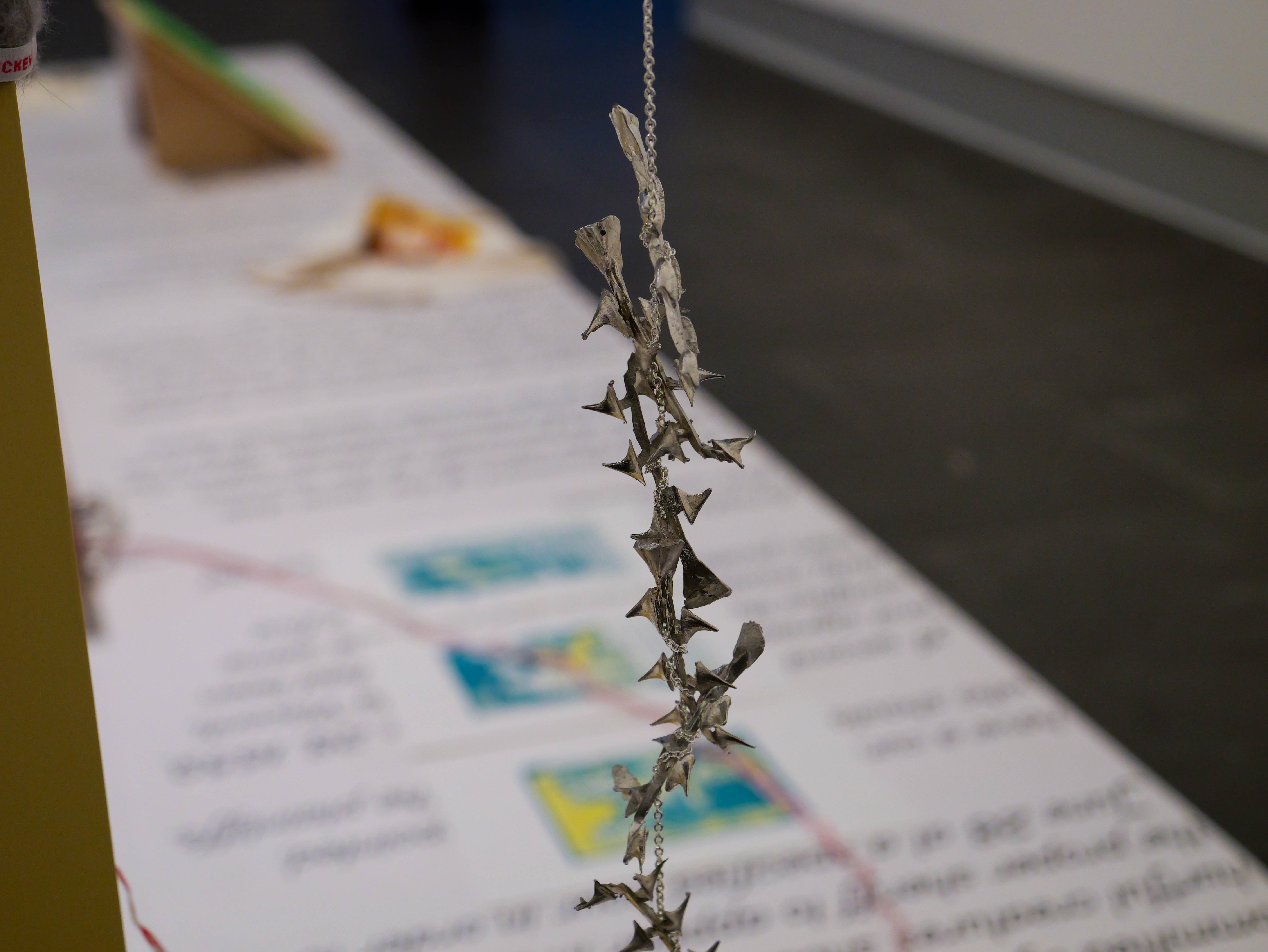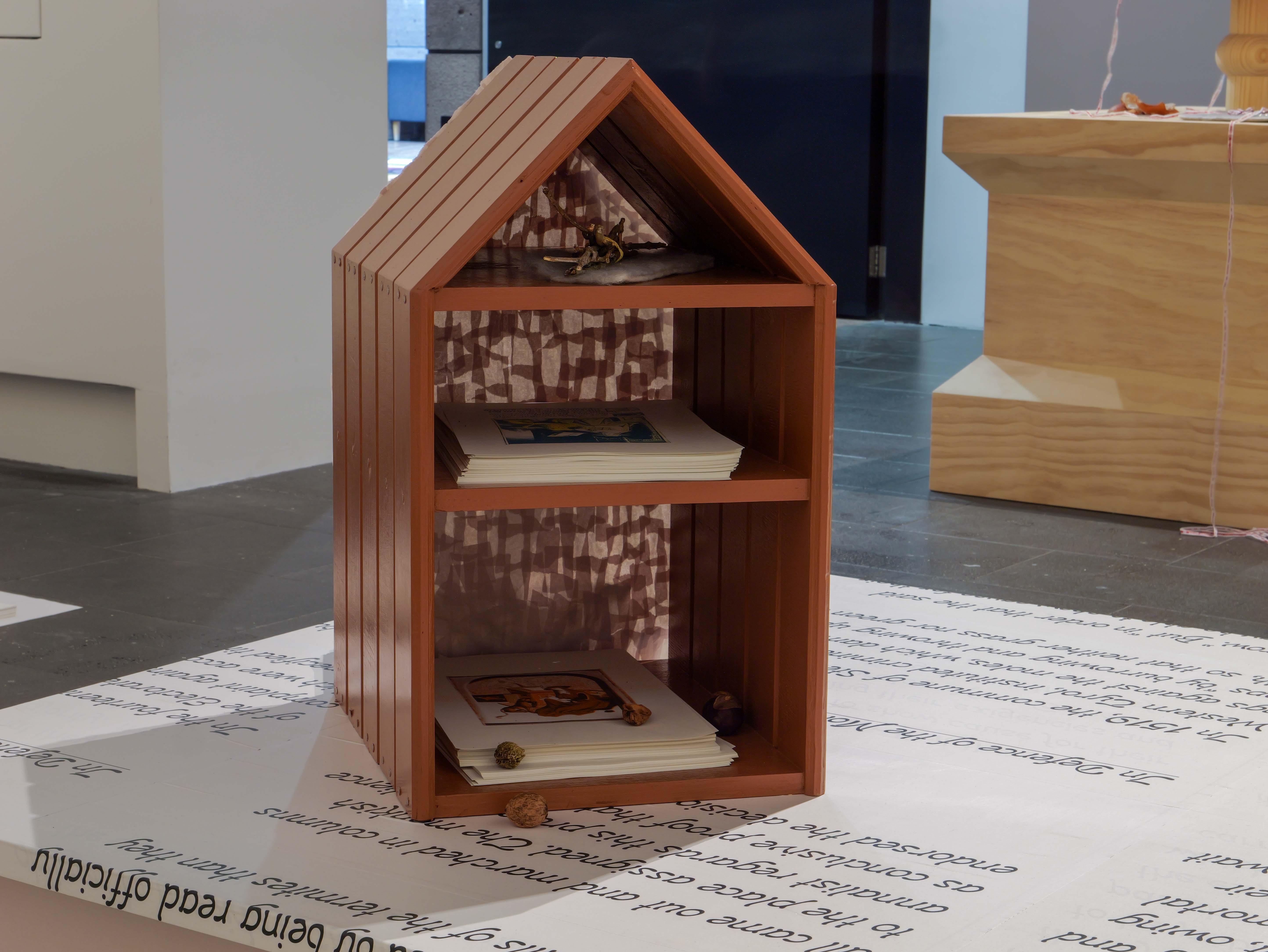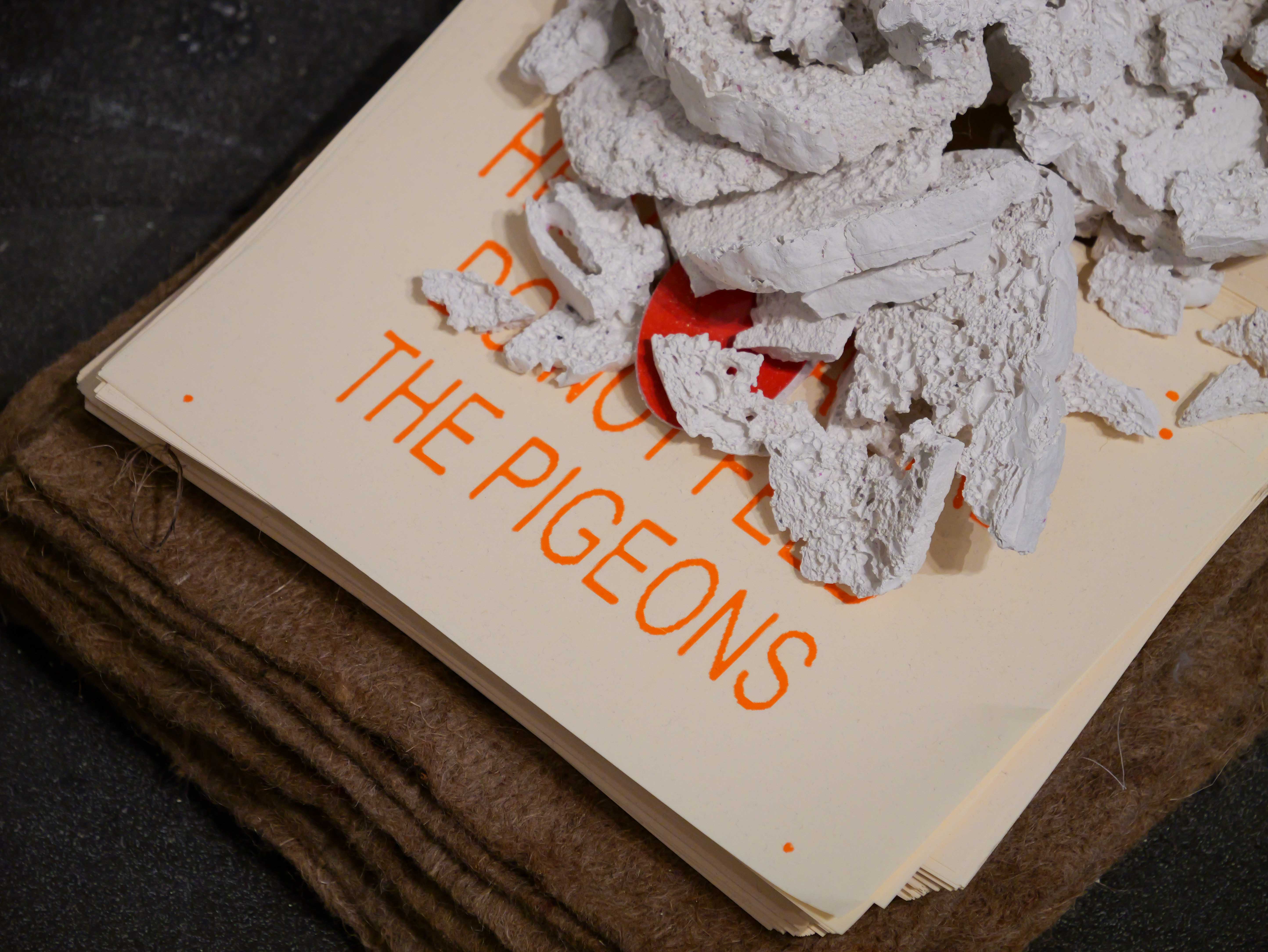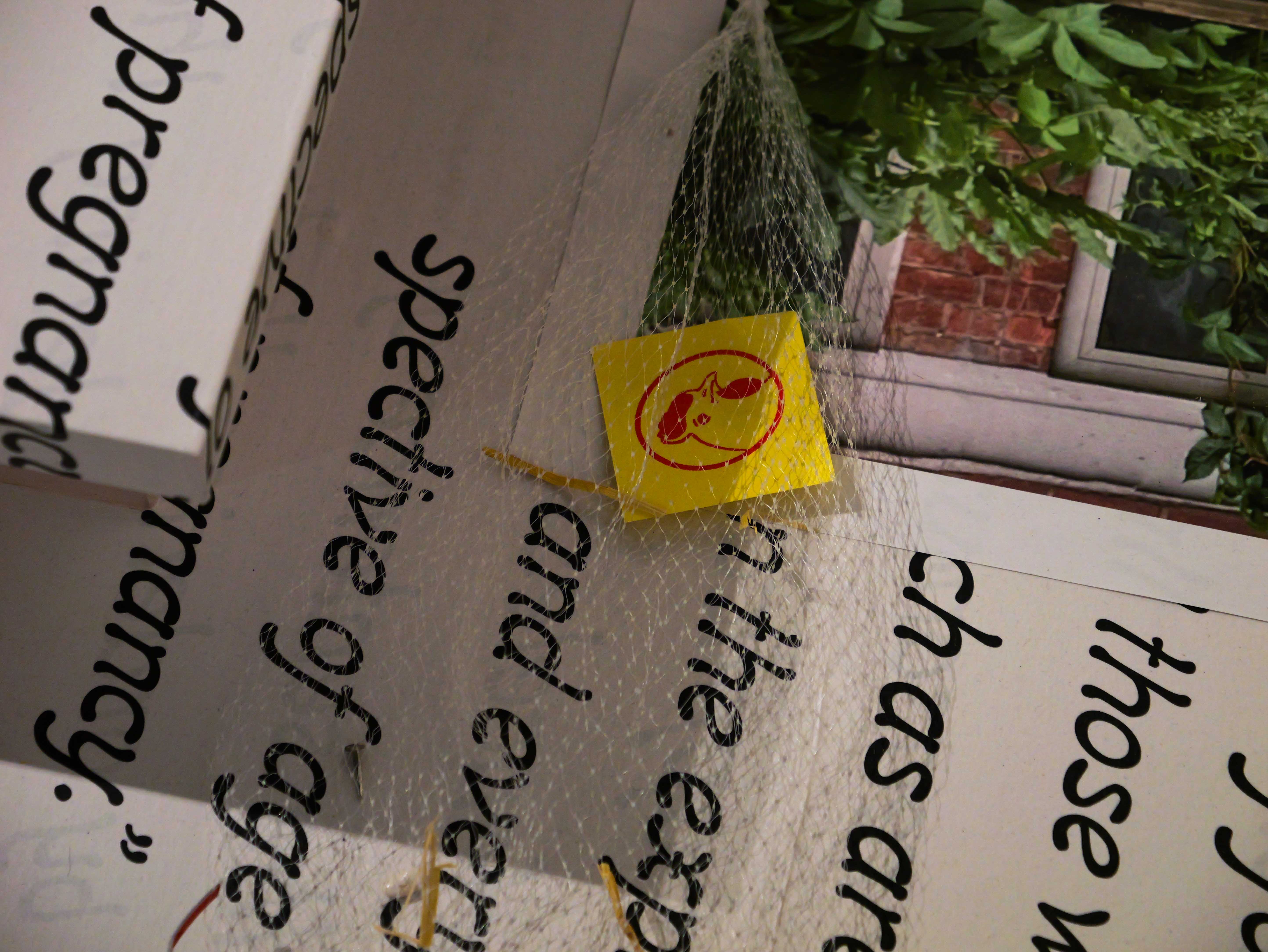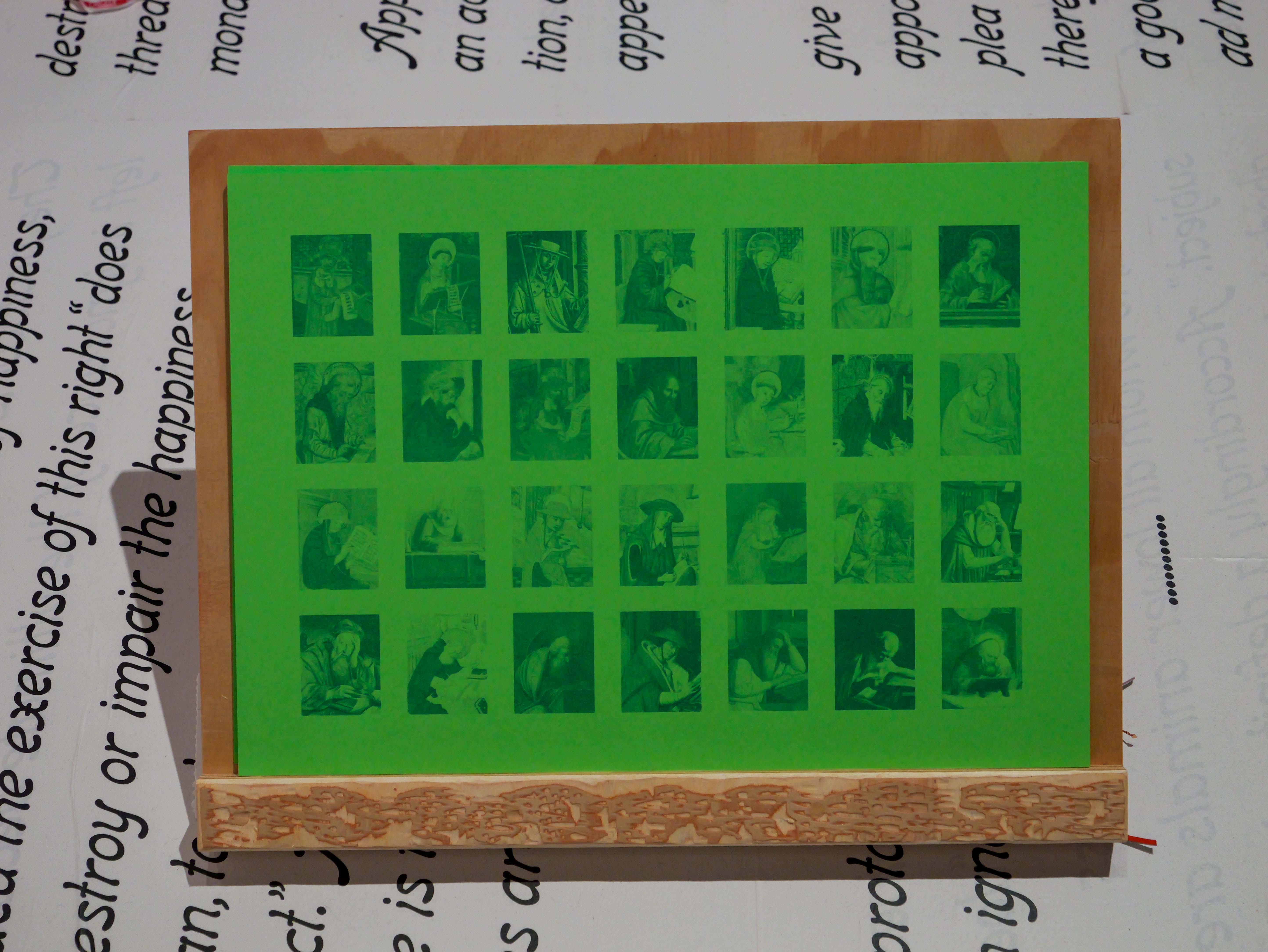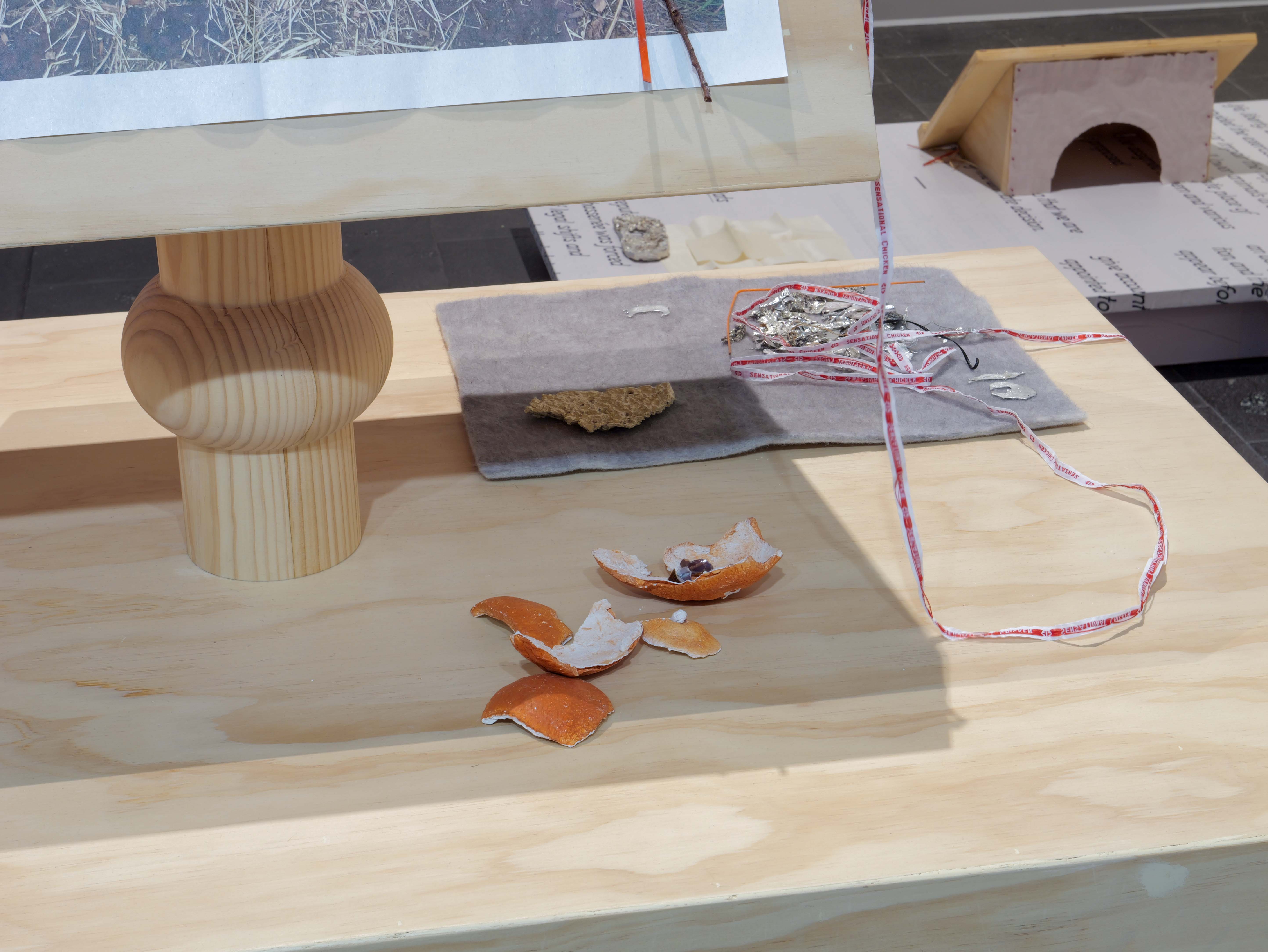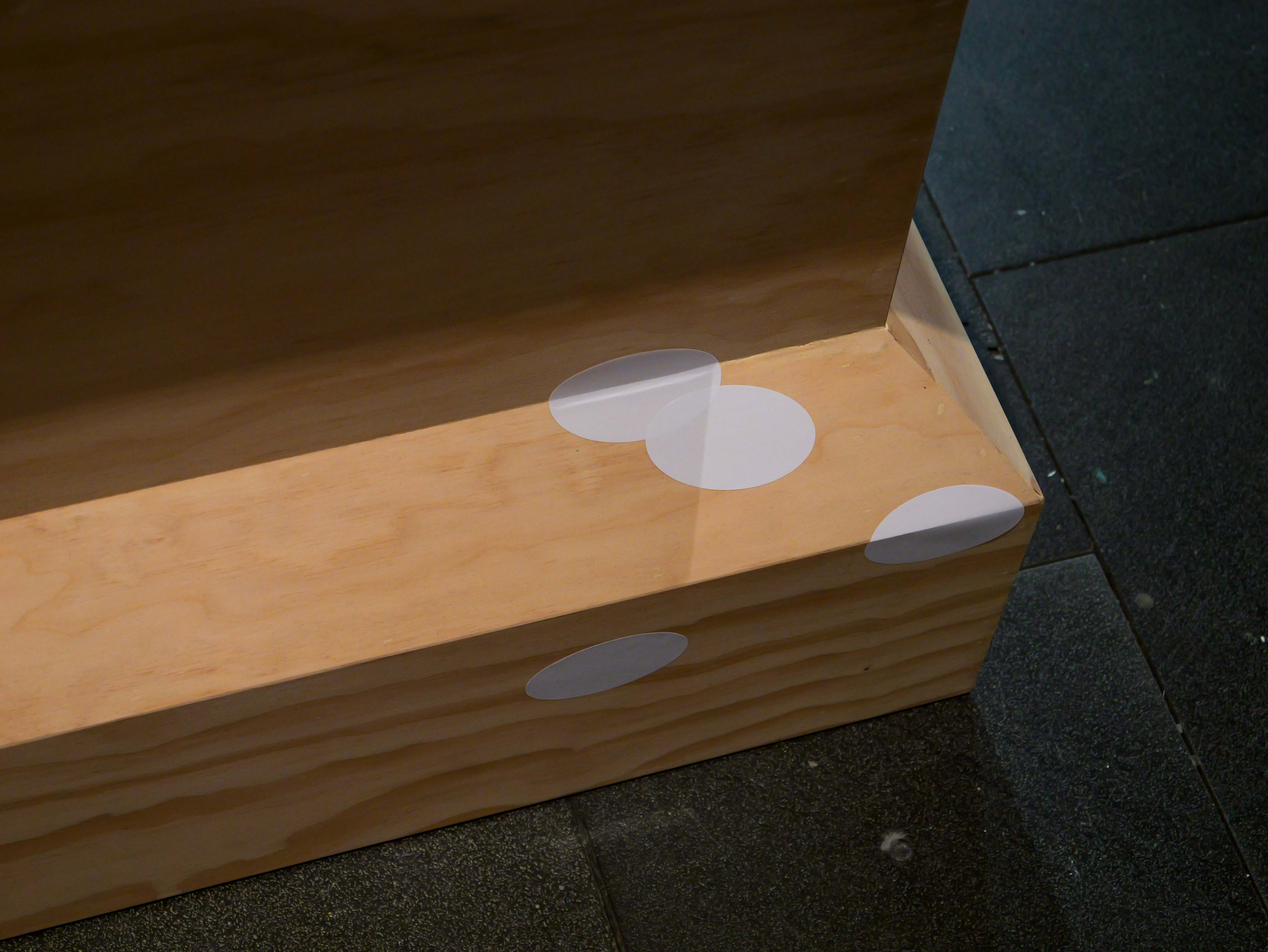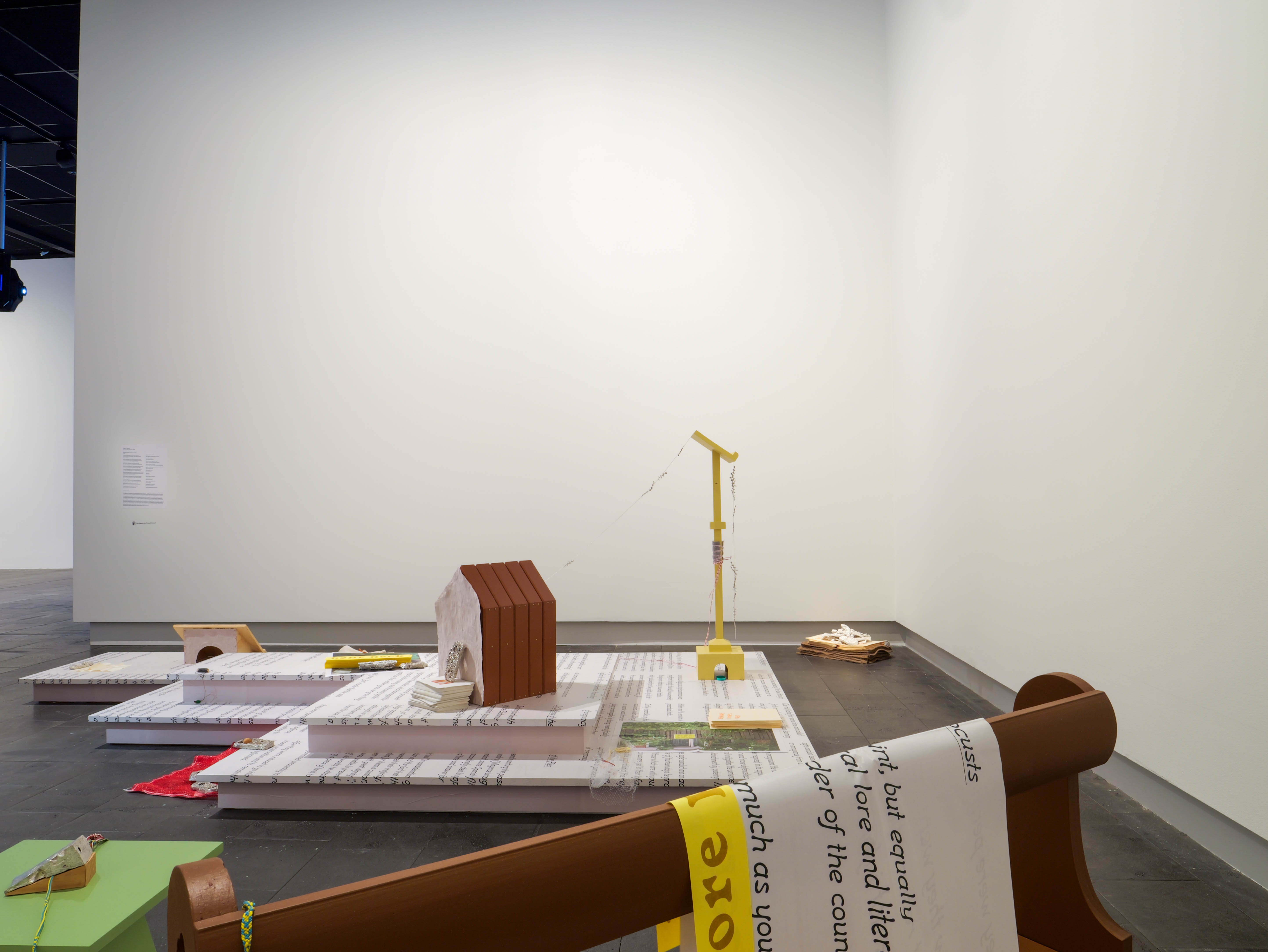Every Green Herb for Meat
2023
Te Puna o Waiwhetū Christchurch Art Gallery, Ōtautahi Christchurch
Part of Spring Time is Heart-break: Contemporary Art in Aotearoa, developed by Curator Melanie Oliver and Curatorial Assistant Jane Wallace
With Anoushka Akel, Emerita Baik, Wendelien Bakker, Megan Brady (Kāi Tahu, Ngāi Tūāhuriri,
Pākehā), Heidi Brickell (Te Hika o Papauma, Ngati Apakura, Kahungunu, Rangitāne, Rongomaiwahine), Juliet Carpenter, Angel C. Fitzgerald, Tyne Gordon, John Harris and Steven Junil Park, Priscilla Rose Howe, Abigail Aroha Jensen (Ngāti Porou,
Ngāi Tāmanuhiri), Madison Kelly (Kāi Tahu, Kāti Māmoe), Etanah Lalau-Talapā, Jimmy Ma’ia’i, Sam Norton, Campbell Patterson, Tia Ranginui (Ngāti Hine Oneone), Luke Shaw, Sorawit Songsataya, Sriwhana Spong, Ilish Thomas, Aliyah Winter.
Every Green Herb for Meat takes the art historical tradition of depicting Saint Jerome (the patron saint of translators and librarians) in his study as a starting point for thinking about how repeated postures and their imaging can cause subjects to become ‘stuck’ in a particular position, whether the position be one of the body or an idea. Furniture reproduced from paintings of Saint Jerome sits alongside/underneath elements in differing states of material/representational calcification. Suggesting that temporary positions (like the shape a body takes bending down to feed a bird) or objects (such as ‘no dogs’ paper signs in shop windows) can become permanent social structures due to repetition or continued use, Every Green Herb for Meat considers the role these ephemeral postures have in ‘stiffening’ hierarchical animal/human relations in a time when entangled ecological thinking is needed.
---
Cast pewter sticks, twigs, Twiglets, rose thorns, cheese wedge, and bread pecked by birds; pewter excess and wood shavings; papier mâché panels; cast plaster orange peel and bread; falconry leashes; cat whiskers (Nino’s); mesh fruit and vegetable bags; Perfect / Sensational Chicken ribbons, silicon mouse trackways; found twine, paper, plastic, snail shell, walnuts, beans, corn, almond, chestnut, sticks, and twigs; replica kestrel egg; silver-plated chain; worm blankets; silk fabric; barley straw; felted rabbit fur (Bram’s); oval stickers; wooden doorstop; sticky insect blunder trap; patent leather; newspaper photographs; risographed signage; various risographed ephemera; Newspaper with excerpts of defence testimony from Edmund P. Evans, The Criminal Prosecution and Capital Punishment of Animals, 1906.
Foot rest replicated from Lorenzo Monaco’s Saint Jerome in his Study (c.1420, Rijksmuseum, Netherlands); Bench replicated from an untitled double-sided painting depicting Saint Jerome (late 15th century, Musée des Beaux-Arts de Dijon, France); Book prop replicated from a book of hours (c.1490-1500, Koninklijke Bibliotheek, Netherlands); Book rest replicated from Jan Van Eyck’s Saint Jerome in his Study (1442, Detroit Institute of Arts, USA); Lectern replicated from an icon with Saint Jerome (c. 1400-50, British Museum, United Kingdom); Desk platform replicated from Vincenzo Catena’s Saint Jerome in his Study (c. 1510, National Gallery, United Kingdom)



